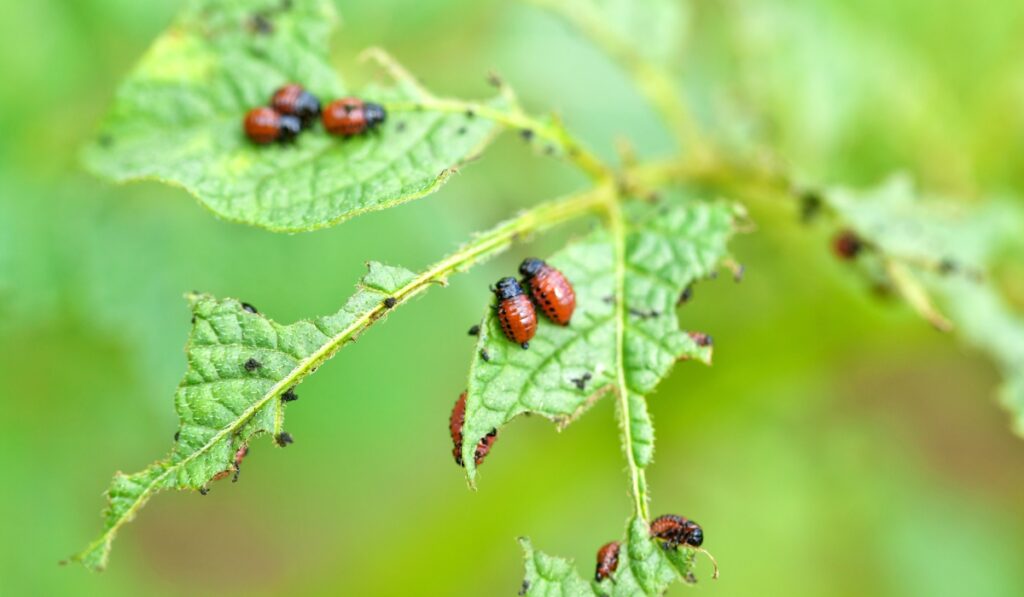Posts Tagged plant diseases
Summer Pests and Diseases: Safeguarding Your California Garden in July

July in California brings long, warm days, vibrant blooms, and unfortunately, a surge in garden pests and diseases. These unwelcome visitors can quickly wreak havoc on your carefully cultivated landscape if left unchecked. DK Landscaping is here to arm you with the knowledge and tools to identify and manage these common summertime threats, ensuring your garden stays healthy and beautiful all season long.
Understanding Common Summer Pests
Several pests thrive in the warm July weather, posing a significant threat to your plants. Here are a few to watch out for:
- Aphids: These tiny, sap-sucking insects can stunt plant growth and transmit diseases. Look for clusters of aphids on the undersides of leaves and stems.
- Whiteflies: Similar to aphids, whiteflies feed on plant sap and weaken plants. They are tiny, white insects that flutter when disturbed.
- Spider Mites: These minuscule pests create fine webbing on plants and cause stippling on leaves. Hot, dry conditions favor their proliferation.
- Snails and Slugs: These slimy creatures feed on foliage and leave telltale trails of slime. They are most active at night and during damp weather.
Identifying Common Summer Diseases
In addition to pests, several diseases can afflict your garden in the summer heat. These include:
- Powdery Mildew: This fungal disease appears as a white, powdery coating on leaves and stems. It thrives in warm, humid conditions.
- Leaf Spot: Various fungi cause leaf spot diseases, resulting in brown or black spots on leaves. These diseases can weaken plants and reduce their aesthetic appeal.
- Root Rot: Overwatering or poor drainage can lead to root rot, a fungal disease that attacks plant roots and causes wilting and decline.
Practical Pest and Disease Management Tips
Fortunately, you can take several steps to manage summer pests and diseases effectively:
- Cultural Practices:
- Proper Watering: Avoid overwatering, which can create a favorable environment for fungal diseases and attract pests like snails and slugs.
- Good Sanitation: Remove fallen leaves, debris, and infected plant material to reduce pest and disease harborage.
- Crop Rotation: Rotate susceptible plants to different locations each year to disrupt pest and disease cycles.
- Plant Selection: Choose resistant varieties and maintain healthy plants, which are less susceptible to pests and diseases.
- Natural Controls:
- Beneficial Insects: Encourage natural predators like ladybugs, lacewings, and praying mantises to control aphid and whitefly populations.
- Organic Sprays: Neem oil, insecticidal soap, and horticultural oil can effectively manage certain pests and diseases.
- Homemade Remedies: Garlic spray, baking soda solutions, and diatomaceous earth can offer some pest control benefits.
- Chemical Controls:
- Targeted Pesticides: If natural and cultural controls fail, consider using targeted pesticides. Always follow label instructions carefully and choose products that are safe for beneficial insects and the environment.
DK Landscaping’s Expertise
At DK Landscaping, we understand the unique challenges California gardens face during the summer months. Our experienced team can help you identify and manage pests and diseases effectively, utilizing a combination of cultural, natural, and, when necessary, chemical controls. We prioritize sustainable practices that protect your garden and the environment.
Don’t let summer pests and diseases ruin your garden’s beauty. Contact DK Landscaping today for a consultation and let us help you keep your landscape healthy and thriving all season long.
Remember, early detection and prompt action are key to successful pest and disease management. By staying vigilant and implementing these tips, you can protect your garden and enjoy its splendor throughout the summer months.





